#When Dinosaurs Roamed America
Explore tagged Tumblr posts
Text
#palaeoblr#prehistoric life#jurassic park#walking with dinosaurs#nyehehehehe#dinosaurs#prehistoric planet#land before time#when dinosaurs roamed america#dinosaur revolution#prehysteria#ice age#disney's dinosaur#we're back!#dinotopia#dinoverse#jurassic world#prehistoric park#chased by dinosaurs
901 notes
·
View notes
Text
TRM Round 1: When Dinosaurs Roamed America (Narrated by John Goodman) vs. We’re Back! (Rex, voiced by John Goodman)

When Dinosaurs Roamed America (Narrated by John Goodman) – Here we have a family of T. rexes demonstrating the power of cooperation. When one of the younger T. rexes tries hunting alone, he struggles, which shouldn’t be much of a surprise. Most hunts, after all, end in failure. The next day, with the whole family working together, the rexes are able to separate an Edmontosaurus from the herd and lead it into an ambush by the mother T. rex. Sadly, their victory is short-lived, as this is yet another documentary that takes place in the last moments of the Cretaceous.

We’re Back! (Rex, voiced by John Goodman) – Rex is a kindhearted Tyrannosaurus who, along with some of his prehistoric peers, is brought to the present of 1993 by the inventor Captain Neweyes. On the way, the dinosaurs are given cereal that grants them human intelligence, thus allowing Rex to perform a musical number in the Macy’s Thanksgiving Day Parade. Things get weirder from there, as the dinosaurs then have their intelligence drained by the inventor’s evil twin to be used in his circus of fear. Neweyes manages to rescue the dinosaurs and take them to the museum, where they can spend their lives teaching kids about dinosaurs and, in the case of Rex, telling a runaway bird his life story during a game of golf.
#t. rex madness#t. rex#tyrannosaurus#tyrannosaurus rex#dinosaur#dinosaurs#when dinosaurs roamed america#we're back!#john goodman
141 notes
·
View notes
Text
The Ghost of Slumber Mountain (1918)
The Lost World (1925)
King Kong (1933)
Fantasia (1940)
Dinosaurus (1960)
Valley of Gwangi (1969)
Planet of Dinosaurs (1978)
Prehistoric Beast (1984)
Land Before Time (Sharptooth) (1988)
Jurassic Park (1993)
Back To The Cretaceous (1998)
Walking With Dinosaurs (1999)
When Dinosaurs Ruled The Earth (1999-2000)
When Dinosaurs Roamed America (2001)
Chased by Dinosaurs (2002-2003)
Dinosaur Planet (2003)
King Kong (2005)
Prehistoric Park (2006)
Grumpy Land of The Lost (2009)
Momma Ice Age 3 (2009)
Tiny The T-Rex Meet the Robinsons (2009)
Clash of The Dinosaurs (2009)
Jurassic Fight Club (2008)
Primeval (2011)
One-Eye Dino-King (2012)
Stumpy (Dinotasia) (2012)
Jurassic World (2015)
Fang Primal (2018)
Prehistoric Planet (2022)
#When Dinosaurs Roamed America#When Dinosaurs Ruled The Earth#Dinosaur Planet#Walking with Dinosaurs
3 notes
·
View notes
Text


I keep forgetting I have this.
#discovery classics collection#essential dinosaur pack#valley of the t. rex#t. rex: new science new beast#when dinosaurs roamed america#utah's dino graveyard#dinosaur planet#the mystery dinosaur#dinosaurs: return to life?#dinosaur documentaries#dinosaurs
3 notes
·
View notes
Text
Bringing this back with some recommendations of other media!
Dinosaur Sanctuary (2022-)

An absolutely wonderful ongoing manga about a dinosaur zoo! The dinosaurs are beautiful and very cute and are treated as animals, not monsters. The zookeepers deal with issues like enrichment, outreach, medical care, and animal safety. They try to help a rejected and adorable Troodon chick connect with its family. The T. rex is old and sleepy and in her chapter the big tension is about whether she'll be coming out of her nest on her birthday or disappoint a young T. rex obsessed guest. There is a single escape in its backstory, which is treated upsettingly realistic, causing a single zookeeper death, one injured, the death of the Allosaurus involved, and a lot of trauma. Overall wonderful for the way it treats both the dinosaurs and zookeeping.
Minecraft: Prehistoric Nature mod (2020-)

Link
If you are now inspired to build your own paleozoo, or go and look at all the extinct creatures just doing their thing in beautiful past landscapes, this Minecraft mod does just that. It adds the ability to build portals to geological periods, and each of them has an incredible amount of biomes and creatures in it. What you do with them is, as usual in Minecraft, up to you. I've had a lot of fun building a house on the edge of a gorgeous Carboniferous canyon with local materials and getting a small edaphosaur going 'baaaah!' wandering in. There's a Palaeopedia item that essentially works as a pokédex, giving you information about creatures when you observe them, and I've been trying to complete it lately. Which is a tall order, considering the many hundreds of animals there are, spread across loads and loads of biomes in, currently, eight periods. The plan is to eventually add all the periods of the Phanerozoic plus the Precambrian plus the Pleistocene as worlds you can visit. Right now, the periods up to the Triassic are accessible, with the Jurassic being worked on and expected to be added soon. That still gives you the entire Paleozoic and more to explore. The Triassic dinosaurs that are in so far are very cool, colourful and detailed even in the voxely style, and make really interesting and odd noises.
Raptor Red (1995)

A great novel about the life of a Utahraptor, the eponymous Raptor Red. She searches for a mate, helps her sister raise her kids, encounters strange creatures and phenomena, and deals with many a hardship. It strikes a good balance in making its characters distinct and memorable while also portraying them as animals and not making them too smart or anthropomorphic. It's a bit outdated, but easy enough to imagine red feathers when red scales are mentioned. Searching for an image of the cover annoyed me because like half of them call it an adventure in the Jurassic age, which it very much is not.
Dinosaurs of Antarctica (2020)

Another documentary to add to the list! I saw this one in imax format last year and had a great time with it. Despite the name, it actually has a much broader scope than just dinosaurs, dealing with Permian, Triassic, and early Jurassic Antarctica. It spends about half of its runtime on showing off the past of the continent in these periods, and the other half cutting to a modern scientific expedition searching for fossils on Antarctica. The juxtaposition of the ancient forests with the vast icy desert landscape is very striking. It actually deals with the Great Dying! Do NOT under any circumstances watch the Dutch dub, it is absolute ass and sounds like it came through google translate.
Sea Monsters (2003)

I found this one because of replies to this very post. Nigel Marven and his time machine are back, and in this one he visits seven different eras to go bother their marine wildlife. Nigel believes every zoo is a petting zoo. You get to see some stuff rarely explored on screen, my favourite segment being the Ordovician, which really goes to lengths to show off what an alien world the Earth was that far back.
If you’ve finished watching Prehistoric Planet, caught the dino bug, and want to watch more, well, I’ve got recommendations for some fantastic older Mesozoic documentaries and shows! I’m only gonna list my faves, but if you have good ones to add, feel free to do so!

Walking With Dinosaurs (1999)
The classic, the one I grew up with. A six episode miniseries that spans the entire Mesozoic, from the Triassic to the Cretaceous. Each episode focuses on a specific location and usually has one specific animal that’s more or less the main character, while also showing off others as they are encountered. The science and effects are 23 years old by now, so don’t expect much fluff or great CGI, but they used what they had very well. It helps a lot that the close-up shots are done using incredibly charming animatronics rather than CGI. The gorgeous music and Kenneth Branagh’s narration add a ton more personality to everything. You will cry about an Ornithocheirus at the end of his journey. There were three special bonus episodes released over the next few years that have Nigel Marven (more on him later) time travelling to see the dinosaurs in person. There are also two sequel series: Walking With Beasts and Walking With Monsters. WWM explores the Paleozoic but went through it too fast and suffers from some ‘Awesomebro-yness’ in my opinion but there’s not much else to turn to if you wanna see the Paleozoic unfortunately. WWB explores the Cenozoic and is every bit as good as WWD. When I had my recovery day after my third covid vaccine I put on all three in chronological order and just marathoned them and the various little aches didn’t bother me all day as I watched the history of the Earth from the Cambrian to the Quaternary.

Prehistoric Park (2006)
Time-travelling Nigel Marven returns from the Walking With Dinosaurs specials to bring back extinct animals to the present. As you might guess, it’s a bit more on the fictional side, but all the animals are really well done and scientific, as are the ecosystems they travel back to. The modern day parts are much more about actually properly running a zoo, including things like enrichment, proper animal care, and cranky zookeepers with a heart of gold becoming Ornithomimus parents than Jurassic Park type scenarios. Nigel doesn’t just get dinosaurs; he goes to the Cenozoic several times and even takes a trip to the Carboniferous for its giant arthropods. Recent enough that feathers are starting to appear on some dinosaurs, particularly the adorable Microraptors. Nigel is an absolute menace and I don’t know who gave him access to a time portal but i’m glad they did. The recent game Prehistoric Kingdom was strongly inspired by this one, to the point of having Nigel voice the tutorials and trailers. Features a friendly herd of Titanosaurs with a disregard for fences causing more havoc than any carnivores ever could.

When Dinosaurs Roamed America (2001)
America’s answer to Walking With Dinosaurs. A single two-hour long documentary spanning the whole of Mesozoic America and really focussing on how the dinosaurs developed between its segments. The only time I ever remember seeing the Early Jurassic depicted, and the only one on this list to treat the end-Permian and end-Triassic extinctions and how important they were for dinosaur evolution. Though it does blame asteroids for them. Very good stuff, aside from a scene where Velociraptors continue eating their prey even as a forest fire sets them on fire. It’s very America-centric, but that’s no weakness. John Goodman makes for a surprisingly good narrator and throws in a sneaky Flintstones joke or two.

Dinosaur Revolution (2011)
This is a bit of an odd one, and it might or might not be your jam, but it certainly is mine. It is essentially a mashup between a dinosaur documentary and dinosaur Looney Tunes. Very silly slapstick segments focussing on specific dinosaurs with somewhat anthropomorphic behaviours get intercut with scientists explaining the latest of 2011 paleontology. The animation is a bit naff but the designs are really good and there’s a lot of feathers. It highlights behavioural traits like intelligence and parental care a lot. Two of its episodes cover pretty much the whole Mesozoic in no particular order, two episodes do Walking With Dinosaurs style covering of a single animal’s story in a single ecosystem. Shunosaurus eats mushrooms and has a bad trip. Lots of mammals go flying after getting thrown about. In a true Blackadder Goes Forth type pivot, the final episode of this very silly slapsticky show has the most haunting and tragic depiction of the K-Pg extinction I’ve ever seen.
#prehistoric planet#walking with dinosaurs#prehistoric park#when dinosaurs roamed america#dinosaur revolution#dinosaur sanctuary#minecraft prehistoric nature mod#raptor red#dinosaurs of antarctica#sea monsters#dinosaur#palaeoblr#vicky's vritings
747 notes
·
View notes
Text
#weirdbirds and the lost wild feel so healing to me the last dinosaur horror game i came across had a dilophosaurus with a frill spitting venom and i got so angry i nearly blacked out
#JP fans: what an iconic design :)#me having grown up on a tv recording of When Dinosaurs Roamed America: look how they massacred my boy :(
2 notes
·
View notes
Note
Oh shit you've seen dinosaur king
You are now my favorite person
I was a dinosaur nerd then lol. Still am, but I'm not as religious in it as I used to be. Dinosaur shows and documentaries were a guilty pleasure.
Primeval, DinoSquad and Dinosapien, Denver The Last Dinosaur, Walking with Dinosaurs (1999), Dinosaur Planet, When Dinosaurs Roamed America, etc.
Animal Planet and Discovery Channel were also a big portion of tv time for me as a kid
56 notes
·
View notes
Text
On the subject of Dinosaur Documentaries...
So Life On Our Planet dropped a few days ago, another installment of this seeming boom of these kind of shows since Prehistoric Planet last year, and it got me thinking about this whole little niche genre.
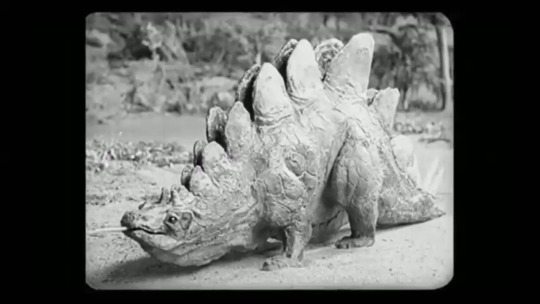
The very first "Paleodoc" was released in 1922, made by the Carnegie Museum of Natural History to educate museum goers on how the fossils they saw were collected and prepared. This began the format I like to call the "Talking Heads" Paleodoc which is mainly in the form of interviews or narration over actual footage of Paleontologists at work with the occasional "Live" Dinosaur for visual aid. These are by far the most common form of dinosaur documentary you'll find, even today, mainly because they're cheap to produce and fit in the general style of most science documentaries.
For many decades throughout the 20th century, Paleodocs were pretty rare. They would pop up time to time, and with the sudden influx of attention they got after Jurassic Park, we got some really good ones. Yet they were all the same Talking Head types. What really changed the game was the good ol Magnum Opus of the field: Walking With Dinosaurs.
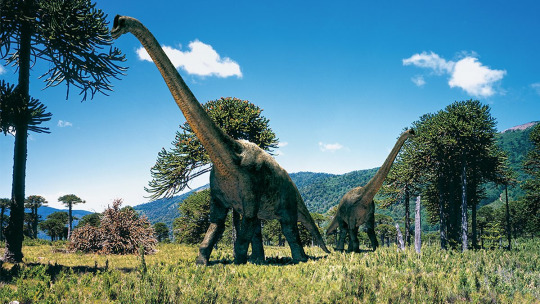
WWD pioneered the second type of Paleodoc I believe to exist, which are the "In Their World" Paleodocs. These are different in the fact they focus almost entirely on the live visual aids, with the human presence being limited to narration or brief pauses for context. They're meant to simulate the modern nature documentary, like Planet Earth, that focus more on showcasing animal behavior with state of the art filming techniques than being a source of in-depth science.
The success of WWD cannot be overstated, and I have to say I do find the In Their World format a lot more engaging and easier to connect with. They portray the wonder of prehistory spectacularly, letting audiences get emotionally connected in the animal characters the story creates, even if this has lead to criticisms of anthropomorphism. These programs also almost always use real footage of modern day earth for their prehistoric creatures to roam on, which I'm sure is very sad for the people who want to see their favorite dead plants on screen.
The Walking With... series would expand into sequels and spin-offs and Nigel Marven, and other companies like Discovery would jump on the bandwagon and release their own takes on the concept, but by the mid 2010s the format had basically died out. We'd get one or In Their World style doc every few years until we just didn't get anything. Outside of the occasional TV special that reused When Dinosaurs Roamed America footage, it was empty.
It took until Disney's Live Action remake of The Lion King of all things for that pendulum to start swinging again. Seeing those expressionless CGI cats got Jon Favreau thinking about how he could use this technology and the talented people behind it to make something really cool, and we got Prehistoric Planet.
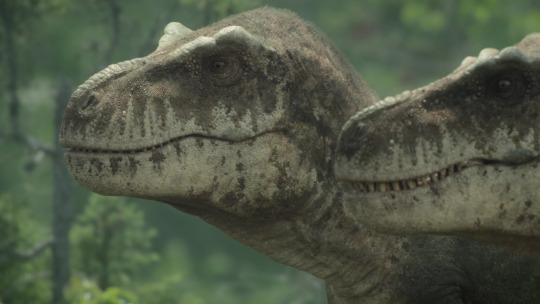
And, in a repeat of Walking With Dinosaurs, we're seeing more of these In Their World type shows. The original guys behind WWD are even making a comeback with their own series, Surviving Earth. Plus even more little hints and rumors of massive incoming projects from overexcited paleontologists trying not to break their embargo.
It looks like the 2020s will be another resurgence in these types of spectacle Paleodocs, and while a good ol Talking Head will always be there, I can't help but get excited for these animated spectacles and all the weird and wonderful ways they flash those visual aids across our TV screens.
166 notes
·
View notes
Text

One of the reasons Dilophosaurus is my favorite dinosaur is because of the documentary, When Dinosaurs Roamed America. I always thought they looked like they had bright red lipstick on them when eating lol. Parrot colors for extra silly.
22 notes
·
View notes
Text
Nearly all the megafauna we associate with Africa today is immigrants. For the last 30 million years or so, its dominant mammalian families have been Bovidae (antelopes, gazelles, gnus, buffaloes), Giraffidae (giraffes), Hippopotamidae (hippos), Camelidae (dromedaries), Felidae (lions, leopards), Canidae (jackals, wild dogs), Hyaenidae (hyaenas), Rhinocerotidae (rhinos), Equidae (asses, zebras), Hystricidae (African porcupines)... nearly all came from outside. Mostly Asia; some from America! (The big exception is elephants).
For the first half of the age of Mammals, say 60 to 30 million years ago, Africa was an island-continent, cut off from the rest of the world by the warm currents of the Tethys Sea:

(Map by Chris Scotese; other pics from Wiki unless noted otherwise)
And, much like Australia in later times, it had developed its own unique fauna of endemic mammals, unknown in the rest of the world. It mostly formed a single clade, appropriately called Afrotheria, which had branched off other placentate mammals in the time of the last dinosaurs. And what were these Afrotheria?




Some of the smallest are still among us. Tenrecs and golden moles (order Afrosoricida), elephant shrews (order Macroscelidea), and hyraxes (order Hyracoidea), the African answer to hedgehogs, moles, shrews, and rabbits, respectively. They are not closely related to their Amero-Eurasian analogues, but they live in much the same way, and much in the same way they did when Africa was an island.

But some of them could grow quite large! Alas, Titanohyrax is known only from its jaws. Thankfully, the jaws and teeth of mammals are very distinctive and allow very precise identification.
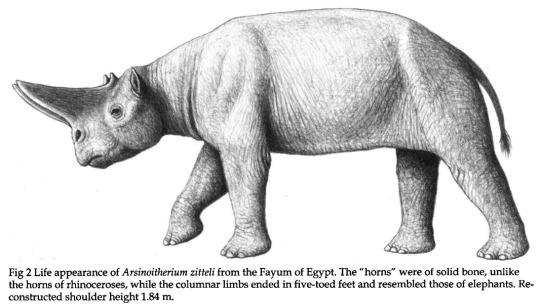
And as for the true giants? Behold magnificent Arsinoitherium (order Embrithopoda), which was a rhino before there were rhinos. No close relation -- in fact, its horns were hollow cones of bone, whereas those of rhinos are made of solid keratin, like giant fingernails. (Sketch by Mauricio Anton, from this wonderful paper by him and Alan Turner).

Then there were the early Sirenians, the still only semi-aquatic ancestors of dugongs and manatees (and the first who broke containment: the proto-manatees Pezosiren and Prorastomus ended up in Jamaica when Africa was still an island, and they still had legs!)

And of course there were early Proboscideans, the grandparents and granduncles of elephants, like Moeritherium, who roamed Egypt when it was still a tropical swamp...
But no isolation lasts forever. Around 40 million years ago, Africa had drifted close enough to Eurasia for some animals to cross through the Tethys. As the seafloor was crushed between continents, the smoking islands that would become Italy, Greece, Turkey, and Iran were rising in between.

Among the first to cross were Primates, such as Afrotarsius, a sort of midway between tarsiers and true monkeys. They did well in the jungles on both sides of the Tethys, spawning macaques, vervets, langurs, baboons and eventually, in the woodlands around Lake Victoria, the first apes.
Another such groups were Rodents -- specifically the Phiomorpha subgroup, in which we find all sorts of distinctly African species such as Old World porcupines, cane rats, and naked mole rats. This is to say that Primates and Rodents did well for themselves after sneaking in.
But then, 30 million years or so, Africa crashed into Eurasia. All barriers to migration went away (well, they came and went with the sea level, but the point is, Africa was no longer super-Australia anymore). And then what we think of today as "African fauna" rushed in.
Here is what African macrofauna looked like at that point, as ungulates and carnivorans were starting to show up:
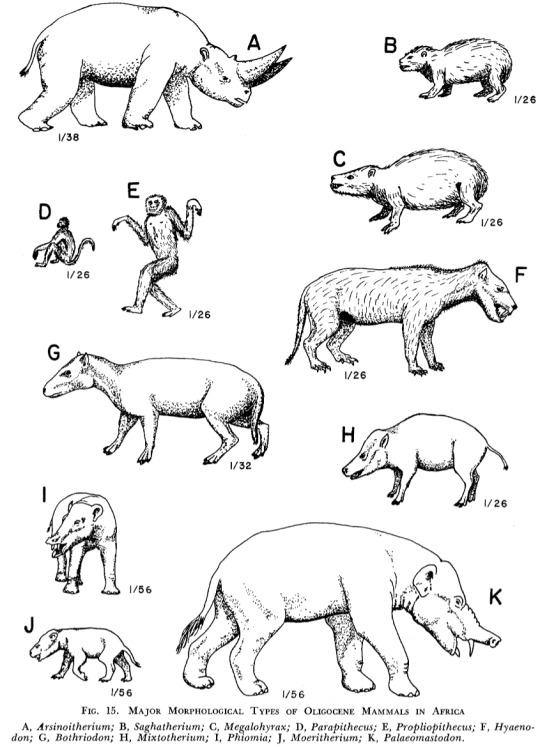
(H. B. S. Cooke, 1968)
The usual rule of thumb is that when two landmasses meet, the faunas of the smallest and/or most isolate landmass lose out. The later interchange between North and South America is a more famous example, but this is no exception.

The great Embrithopods vanished forever; other orders were relegated to small, humbler sizes. In came Bovidae, Giraffidae, Hippopotamidae, Rhinocerotidae, Felidae, Canidae, Hyaenidae, all sharpened by competition on a larger scale in the great grasslands of Eurasia. In came Equidae and Camelidae, which had appeared in North American plains alongside pronghorns (where did you think llamas come from?), and had gone all the way through Bering and Asia.
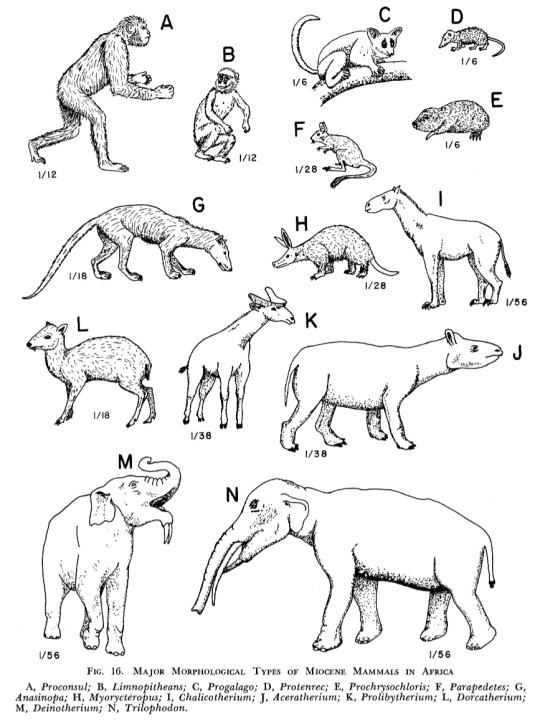
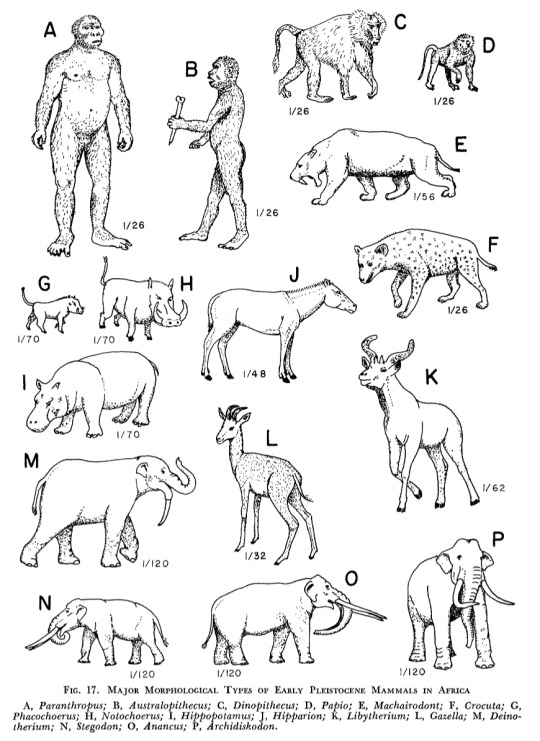
And by later ages, you see it yourselves: elephants and apes actually do quite well, but Eurasian carnivorans and ungulates now rule the land.
To be fair, many groups of pre-invasion African fauna did more than just endure. In the Miocene epoch, soon after the great exchange, apes would be found throughout Eurasia from Spain to China, and perhaps some key part of our own evolution took place there. Elephants were even more widespread, getting as far as South America; manatees invaded warm seawaters all around the Equator. Rock hyraxes and African porcupines had some success in the Near East and southern Europe. But I don't think any of these transformed the Eurasian landscape on the same scale as the African landscape was.
And to be sure, the newcomers were impressive!

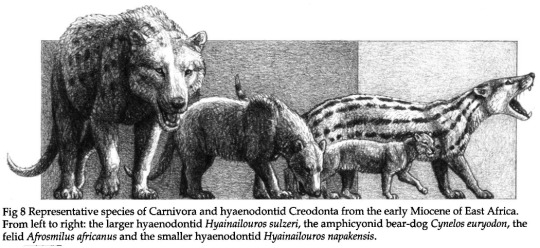
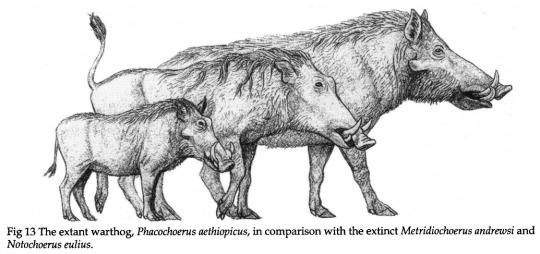
The wheel of ages turns and turns, caring little for who thrives and who falls -- but life as a whole, somehow, always falls on its feet.
26 notes
·
View notes
Text
Germany returns 'stolen' dinosaur fossil to Brazil
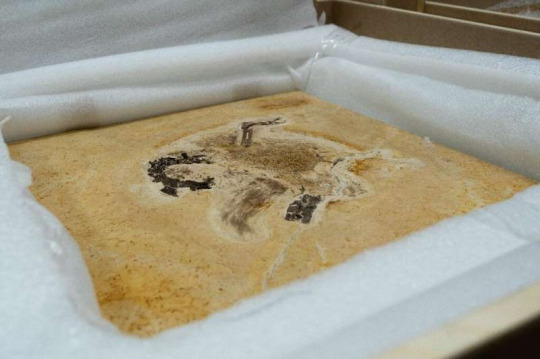
A fossil from a rare dinosaur that roamed South America 110 million years ago has been returned to Brazil from Germany, ending a diplomatic spat triggered by charges that researchers stole it.
The small dino, called Ubirajara jubatus, which had an early form of feathers and spearlike rods jutting from its shoulders, fascinated scientists, who identified it as previously unknown species in a paper published in 2020.
But it soon sparked a scientific and ethical scandal, when Brazilian researchers accused the German team behind the paper of illegally removing the fossil from Brazil.
After a nearly three-year standoff, a delegation led by German Foreign Minister Annalena Baerbock returned the fossil Sunday during a visit to Brasilia, officials said.
Continue reading.
#brazil#germany#politics#science#biology#paleontology#brazilian politics#german politics#international politics#mod nise da silveira#image description in alt
219 notes
·
View notes
Text
Discovery Doc includes When Dinosaurs Roamed America, Dinosaur Planet, and Dinosaur Revolution (including deleted scenes from DR, for reasons.)
#dinosaur revolution#when dinosaurs roamed america#dinosaur planet#palaeoblr#dinosaurs#prehistoric life#Repenomamus
153 notes
·
View notes
Text

First tyrannosaur fossil discovered with its last meal perfectly preserved in its stomach
Researchers have found a tyrannosaur’s last meal perfectly preserved inside its stomach cavity.
What was on the menu 75 million years ago? The hind legs of two baby dinosaurs, according to new research on the fossil published Friday in the journal Science Advances.
Dinosaur guts and hard evidence of their diets are rarely preserved in the fossil record, and it is the first time the stomach contents of a tyrannosaur have been uncovered.
The revelation makes this discovery particularly exciting, said co-lead author Darla Zelenitsky, a paleontologist and associate professor at the University of Calgary in Alberta.
“Tyrannosaurs are these large predatory species that roamed Alberta, and North America, during the late Cretaceous. These were the iconic apex or top predators that we’ve all seen in movies, books and museums. They walked on two legs (and) had very short arms,” Zelenitsky said.
“It was a cousin of T. rex, which came later in time, 68 to 66 million years ago. T. rex is the biggest of the tyrannosaurs, Gorgosaurus was a little bit smaller, maybe full grown would have been 9, 10 meters (33 feet).”
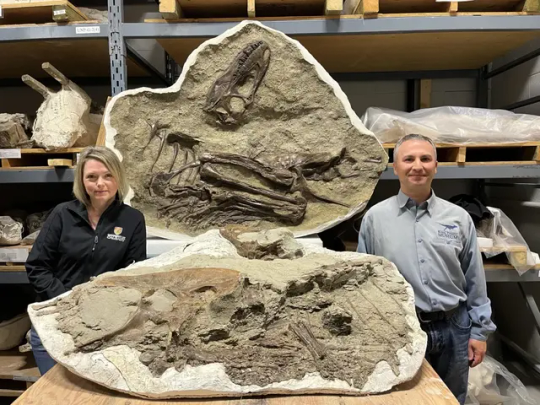
The tyrannosaur in question, a young Gorgosaurus libratus, would have weighed about 772 pounds (350 kilograms) — less than a horse — and reached 13 feet (4 meters) in length at the time of death.
The creature was between the ages of 5 and 7 and appeared to be picky in what it consumed, Zelenitsky said.
“Its last and second-to-last meal were these little birdlike dinosaurs, Citipes, and the tyrannosaur actually only ate the hind limbs of each of these prey items. There’s really no other skeletal remains of these predators within the stomach cavity. It’s just the hind legs.
“It must have killed … both of these Citipes at different times and then ripped off the hind legs and ate those and left the rest of the carcasses,” she added. “Obviously this teenager had an appetite for drumsticks.”
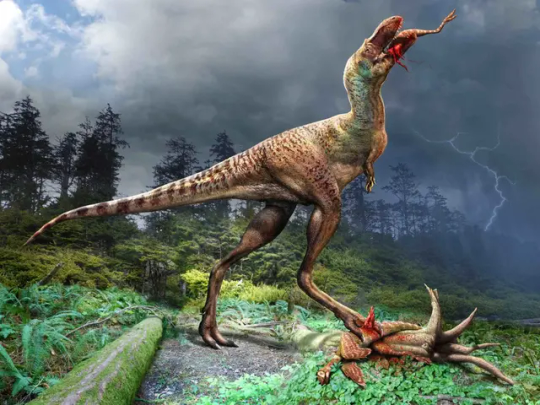
The two baby dinosaurs both belonged to the species called Citipes elegans and would have been younger than 1 year old when the tyrannosaur hunted them down, the researchers determined.
The almost complete skeleton was found in Alberta’s Dinosaur Provincial Park in 2009.
That the tyrannosaur’s stomach contents were preserved wasn’t immediately obvious, but staff at the Royal Tyrrell Museum in Drumheller, Alberta, noticed small protruding bones when preparing the fossil in the lab and removed a rock within its rib cage to take a closer look.
“Lo and behold, the complete hind legs of two baby dinosaurs, both under a year old, were present in its stomach,” said co-lead author François Therrien, the museum’s curator of dinosaur paleoecology, in a statement.
The paleontologists were able to determine the ages of both the predator and its prey by analyzing thin slices sampled from the fossilized bones.
“There’s growth marks like the rings of a tree. And we can essentially tell how old a dinosaur is from looking at those, the structure of the bone,” Zelenitsky said.
Changing appetites of top predators
The fossil is the first hard evidence of a long-suspected dietary pattern among large predatory dinosaurs, said paleoecologist Kat Schroeder, a postdoctoral researcher at Yale University’s department of Earth and planetary science, who wasn’t involved in the research.
The teen tyrannosaur didn’t eat what its parents did. Paleontologists believe its diet would have changed over its life span.
“Large, robust tyrannosaurs like T. rex have bite forces strong enough to hit bone when eating, and so we know they bit into megaherbivores like Triceratops,” Schroeder said via email. “Juvenile tyrannosaurs can’t bite as deep, and therefore don’t leave such feeding traces.”
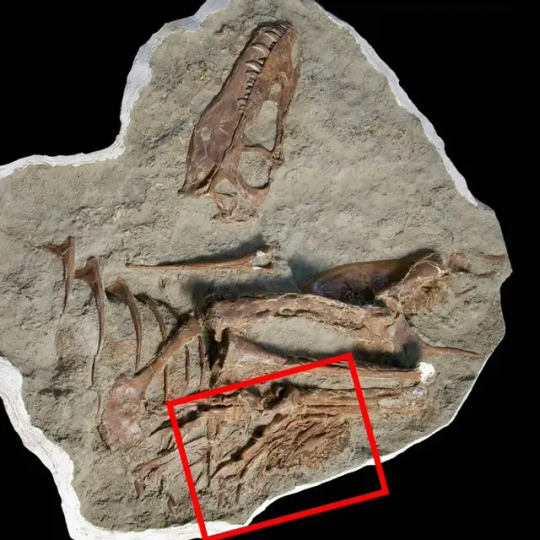
She said that scientists have previously hypothesized that young tyrannosaurs had different diets from fully developed adults, but the fossil find marks the first time researchers have direct evidence.
“Combined with the relative rarity of juvenile tyrannosaur skeletons, this fossil is very significant,” Schroeder added. “Teeth can only tell us so much about the diet of extinct animals, so finding stomach contents is like picking up the proverbial ‘smoking gun.’”
The contents of the tyrannosaur’s stomach cavity revealed that at this stage in life, juveniles were hunting swift, small prey. It was likely because the predator’s body wasn’t yet well-suited for bigger prey, Zelenitsky said.
“It’s well known that tyrannosaurs changed a lot during growth, from slender forms to these robust, bone-crushing dinosaurs, and we know that this change was related to feeding behavior.”
When the dinosaur died, its mass was only 10% of that of an adult Gorgosaurus, she said.
How juvenile tyrannosaurs filled a niche
The voracious appetite of teenage tyrannosaurs and other carnivores has been thought to explain a puzzling feature of dinosaur diversity.
There are relatively few small and midsize dinosaurs in the fossil record, particularly in the Mid- to Late Cretaceous Period — something paleontologists have determined is due to the hunting activities of young tyrannosaurs.
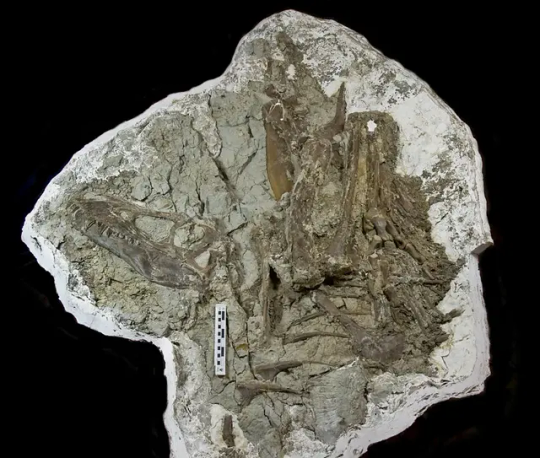
“In Alberta’s Dinosaur Provincial Park, where this specimen is from, we have a very well sampled formation. And so we have a pretty good idea of the ecosystem there. Over 50 species of dinosaurs,” Zelenitsky said.
“We are missing mid-sized … predators from that ecosystem. So yeah, there’s been the hypothesis that, the juvenile tyrannosaurs filled that niche.”
By Katie Hunt.


#First tyrannosaur fossil discovered with its last meal perfectly preserved in its stomach#tyrannosaur#Gorgosaurus libratus#Citipes#Citipes elegans#dinosaurs#paleontologist#Alberta’s Dinosaur Provincial Park#archeology#archeolgst#history#history news#ancient history
82 notes
·
View notes
Text
January 26, 2025
“Praise the Broken Promise of America” by Alison Luterman
Praise deep mineral veins under rich dirt,
and fossilized remains of dinosaurs turning themselves into gas
for our benefit. Praise the exhausted earth,
miles and miles of subsidized corn
and cattle lowing from their hell-holes
in automated milking barns.
Praise farmworkers rising before dawn,
their sore backs and aching knees. Praise the myths
that drew them here, stories eagerly consumed
when there is nothing to eat but faith.
Praise the courage of the reverend to look
the dragon in the eye and preach mercy;
praise whatever hidden waterways are still pristine.
Praise music that refused to play at the funeral of democracy.
and the killing cold that swept through Washington
when the fake Pope took power.
Praise drag queens and lipstick lesbians, boys who are girls
and girls who are lions, butch women wearing tool belts,
and all the music theater nerds
who are even now building new passageways
mapping the next underground railroad
and suiting up to be conductors—oh, everybody,
get on board! This train will chug quietly
across the great plains and over rocky Sierras,
into the desert where people still leave bottles of water
and packets of food for the desperate
who have always been the lifeblood
of this nation. It will stop in obscure hamlets
to pick up fugitives with tears tattooed on their cheeks
and fraying backpacks overspilling with contraband books.
Praise the weirdos because if anyone can save us
it will be us. And praise all the glittering illusions
we gawked at, ignoring our own neighbors
in favor of a 24-hour peep show on the internet.
Praise the convict fire fighters on the front lines in L.A.,
battling the insurmountable for ten dollars a day. We gambled
our future for a hot air balloon with a hole in it. Praise
our reckless hubris, and the infinite distractions
of the hall of mirrors we find ourselves in now, and bless
our overwhelmed brains, scurrying like mice for shelter.
Bless our collective rage, and protect
the officers who stood up on January 6th and now see their attackers
roaming the streets like rabid dogs, ah, bless the animals
we have always been, in our coats and shoes
and clumsy language, bless our willful ignorance,
so enormous, so world-altering, that, like the great wall of China,
it can be seen from outer space,
where the gods are shaking their heads even now,
in pity and in awe.
- from Poets Respond
Alison Luterman: “The poem says it all. This past week has been heart-shredding. I’m not saying poetry can change anything right now, but it comforted me to write this, and I hope it offers comfort to anyone who reads it.”
10 notes
·
View notes
Text
T. rex Madness Round 1 Masterpost

All round 1 polls are here!
Prehistoric Planet (Hank) vs. Dinosaur Office (Terry)
Extreme Dinosaurs (T-Bone) vs Doctor Who (Deep Breath T. rex)
Fossil Specimen (Black Beauty: RTMP 81.6.1) vs There Are Tyrannosaurs Trying On Pants in My Bedroom
DC Comics (Batcave T. rex) vs Old grocery store T. rex toy
Doraemon: Nobita’s Dinosaur (T. rex) vs Ice Age (Momma Dino)
Dinosaur Revolution (Junior) vs Dinosaur Island (2014/2015)
Prehistoric Park (Terrence) vs Barney (Barney)
T. Rex the band vs. Prehistoric Park (Matilda)
Digimon (Tyrannomon) vs. Prehistoric Kingdom T. rex
Project for Awesome (T. Rax) vs. Safari Ltd. Feathered T. rex
You are Umasou (Heart) vs. Fossil Specimen (Jane BMRP 2002.4.1)
Jurassic Park (Rexy) vs. Dinosaurs (Roy Hess)
Night at the Museum (Rexy) vs. The Lost World (1925)
Beast Wars (Megatron) vs. Chrome game T. rex
Pokémon (Tyranitar) vs. Pokémon (Tyrantrum)
Fossil Specimen (Stan BHI 3033) vs. Toy Story (Rex)
Charles Knight T. rex vs. Transformers (Grimlock)
Theodore Rex (Theodore Rex) vs. Walking With (Mother T. rex)
Super Mario Odyssey (T. rex) vs. Banjo Tooie (T. rex Banjo)
Fossil Specimen (Sue FMNH PR 2081) vs. Jimmy Neutron “Sorry, Wrong Era” T. rex
King Kong 1933 (Tyrannosaurus rex) vs. Mighty Morphin’ Power Rangers (Tyrannosaurus Dinozord)
Marvel Comics (Devil Dinosaur) vs. Fossil Specimen (Rexy AMNH 5027)
When Dinosaurs Roamed America (Narrated by John Goodman) vs. We’re Back! (Rex, voiced by John Goodman)
The Magic School Bus (T. rex) vs. Sinclair Dinoland 1964 World’s Fair
King of the Dinosaurs by Michael Berenstain vs. Dinosaur Train (Buddy)
The Good Dinosaur (Ramsey) vs. Meet the Robinsons (Tiny)
Fossil Specimen (B-rex: MOR 1125) vs. Primal (Fang)
The Land Before Time (Chomper) vs. Project G.e.e.K.e.R. (Noah)
Saurian T. rex vs. Gravity Falls (T. rex in amber)
Jurassic Park (Lost World family) vs. 3D Dinosaur Adventure (Assembled T. rex)
Fantasia (Rite of Spring T. rex) vs. Prehysteria! (Elvis)
Yu-Gi-Oh! (Ultimate Conductor Tyranno) vs. Prehistoric Planet (Flirt Man)
87 notes
·
View notes
Text



Jurassic World: Rebirth
I have to say, these images look amazing and we will get more Than one Spinosaurus and the rafting scene from Michael Crichtons Novel and get the Mosasaurus back. What a surprise! I am very hyped for this, it looks incredible and promises high stakes Dinosaurs Action. Also the new Designs look great, they remind me of some old Dinosaurs Documentaries like when Dinosaurs roamed America or the Dino Planet. Honestly something similar to their real life counterparts, I always wanted to see the Jurassic franchise dinosaurs in.
(Still can’t believe that Anthony Bridgerton, who had an amazing performance in Wicked with Dancing through life is now cuddling with Dinosaurs. What a career and well deserved success, because Jonathan Bailey is definitely a diamond in the rough.)
I hope this movie will be great, I‘m so excited now to see it in Cinema. 😊
This year Jurassic Fans, we are so back!
#jurassic world#jurassic world rebirth#scarlett johansson#jonathan bailey#jurassic park franchise#jurassic park book#michael crichton#wicked#anthony bridgerton#bridgerton
6 notes
·
View notes